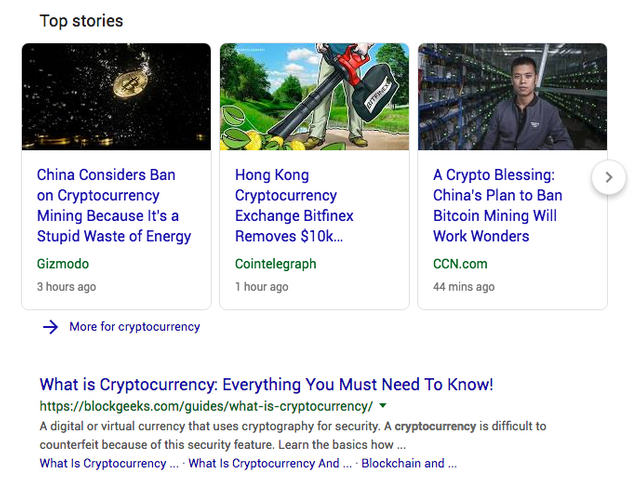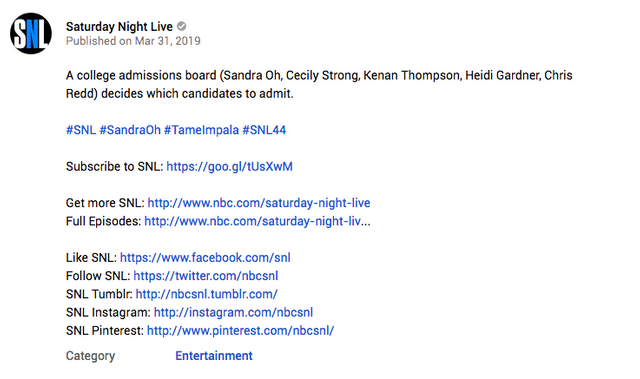Myth Mystery and Magic of SEO - Part 10 - The Double Duty Link
We’ve looked at inbound, outbound, and internal links, but today we’ll check out the hardest working link of all - what I call the double duty link. The double duty link sends two signals to search bots - boosting your social signal to Google and your page rank signal at the same time.

Image courtesy of Pixabay
Yes - Google DOES pay attention to social media! Google owns one of the most successful and highly trafficked social sites there is after all. (YouTube) How much your social signal counts towards your overall page rank is a mystery only Google engineers know for sure, but it does count, and many experts believe it counts a lot.
How do you improve that social signal? The answer may not be what you think. Unlike most online gurus, the bots pay little or no attention to the numbers most marketers say are important. Followers? Nope. The current rage of placing a driveby tweet on an “influencer” account isn’t what drives Google, and shouldn’t be what drives you either. Likes? Nope. Likes are the online equivalent of a friendly wave IRL - not much more. They are, in the grand scheme of online ranking, as meaningless as spammy driveby tweets.
What Google looks at, and what you should look at both for building your own social media accounts and your page ranking is engagement.
Do NOT confuse engagement with reach.
Reach is NOT the number of people who DID see your comment, it’s the number of people who COULD see your comment.
For example - if you post a tweet on an “influencer” account (an influencer is merely someone with a lot of followers who usually posts about a specific topic) reach is calculated by how many followers that account has combined with how many followers each account that retweets your tweet has. The same holds true on ANY Social Media channel.

Image courtesy of Pixabay
There is a fatal flaw in patting yourself on the back for your “reach”. There are over 500 million tweets made every day, which means about ¾ of those followers won’t ever see your tweet because it will be “pushed down” by newer tweets, especially on an active feed. In addition, it has been found that followers typically don’t “unfollow” an account after time, they just stop visiting that account. There is a vast difference between Followers and Active Followers who will see and respond to your comment.
The same holds true with subscriber numbers on YouTube, followers and group members on FaceBook, and followers on Pinterest and InstaGram. Don’t feel like you’ve accomplished your goal of getting your content in front of interwebz eyeballs when you see a report that says you “reached” a million people. You didn’t. Your actual number is probably closer to 1% of that. Reach numbers are what we marketers give our clients to impress them with our brilliance. Engagement are the numbers that Google pays attention to, and the ones that you should also look at first.
So what is engagement and why does Google use this number in determining your social signal? Engagement is, quite simply, what happens when someone interacts in some way with your comment, tweet or video.
Retweets and shares count. A lot! RePins count. Watching a video to the end, and then sharing it on other social media channels, especially high trafficked, authority websites is pure gold! THAT is when you break into the Happy Dance! That occurrence can propel you from Google obscurity to page one of the SERPs overnight.
The Big Five social channels that we know count most for Google are
- YouTube
When you’re posting to a feed that isn’t your own on any of these channels the goal is to get a conversation going, to get responses to the comment you made. To get ENGAGEMENT. And if you’ve worked your page url into that comment, Google really perks up and rewards you with points for that link, especially if it has a keyterm in the link. Many times you can’t do an anchored text link in your comment, so you have to just use a bare url. This is where it pays off to have a GOOD title that becomes part of the url link.
So if your article title for Steemit or a Wordpress Blog is "How Cryptocurrency gains help emerging markets" the url will be
steemit.com/user/how-cryptocurrency-gains-help-emerging-markets
A WordPress site will often include the category that is tagged in place of the /user/ in the url possibly making the Google Bot signal even stronger.
Don’t do a spammy driveby comment on any Social Media site.
Just don’t do it. The owner and visitors of the feed will ignore you at best, and you could have your comment deleted or reported to the channel as spam at worst. It can take time and research to find feeds that are a good place to start conversations on your topic. It can take time to craft a comment that becomes a conversation starter. But when you’re commenting on someone else’s feed, the only way to boost your ranking is through engagement and anything else is just wasted effort that often backfires and hurts you more than it helps.
So don't do comments like this:
"Nice post see more posts like this here (url)"
"Great vid, enjoyed it, here's another one (url)"
While those are extreme examples, I think you know what I mean. Twitter is following Facebook and is cracking down on spam comments and you could find YOUR Twitter or Facebook account deleted. Besides being ineffective and potentially dangerous, it's just rude!
Another important consideration when leaving a comment with a link on someone else's social channel, is to be sure their content or post matches your keyterm topics. There is nothing to be gained by leaving a comment about your latest cryptocurrency post on PewDiePie’s latest YLYL Laugh Challenge. Unless that challenge happens to be about crypto investing - an unlikely occurrence.
Your own channels provide an excellent opportunity to get backlinks into your descriptions and going back to your website or page. The very best channel for this is YouTube. Just like with Steemit, you have two search engines at work - the YouTube internal engine, which helps your content be found on both YouTube and the Google search.

Just like with Steemit, be SURE you do a good description, title and tags! Make those first two sentences - roughly the part that shows in the description window on YouTube before hitting the “more” button - appealing to the viewer. You want to accomplish two things - get at least one keyphrase in those first sentences and write them in a way that gets someone to watch your video. You have lots of space for text in a YouTube description - USE IT. Don’t do sloppy, lazy one sentence descriptions like “Watch this video about cryptocurrency. It’s good.” That is a total waste of time and space.
Unlike Steemit, you can use entire multi-word keyphrases in your YouTube description (without having to use a hyphen between words). Again, you have a lot of space for keytags - use them! Put the keytags that you feel will help you get found on YouTube first, and then make sure at least all your main keyterms and a few of your secondary keyterms are included.
Also, be sure to include your links in your description. The example below is probably overkill for your content, but it gives a very good idea of how to use those links to your site and page content.

And finally, in ALL comment you leave, on any Social channel, use your keyterm in the comment. On your own YouTube channel, use a backlink whenever it makes sense to do so.
If you follow these suggestions, it is possible to have BOTH your text article on Steemit or your own site, AND your YouTube video show up on the first page of the Google SERPs!
Next up are some of the not so well known, but very important considerations that Google looks at to help determine your ranking.
Previous SEO Articles in This Series
The Myth and Magic of SEO
The Marketing Mindset
Keywords - Part 1
Keywords - Part 2
Keywords - Part 3
Keywords - Part 4
Backlinks
The Missing Link
Why Am I Writing This Stuff and How Will It Help Steem and Steemit?
I’ve been helping clients reach good rankings and teaching SEO for more years than I care to think about. Some of you may have taken part in Discord workshops and tutorial sessions I’ve had with various groups here on Steem. Because the blockchain is based on transparency and openness, it’s time to bring that training out from the private Discord groups for everyone on Steemit.
If we want Steem and Steemit to grow, we need to be able to compete for eyeballs on the traditional net in an effective manner. Thus, we need to know and understand SEO because it is the primary mover behind getting those eyeballs on our content. By breaking down SEO into manageable chunks of information, I’m hoping everyone reading these articles will be able to improve their own rankings and turn more conventional net people into Steemians.
Never really been much of a social media user before Steem.
Just now dabbling in Twitter...
I personally rather dislike most Social Media, but it has proven invaluable for helping clients and my own websites build an audience, or sell product. Twitter can be especially useful for customer service and announcements, and YouTube probably provides the most valuable SEO boost when used well. If your target audience hangs on FB or Pinterest or IG, FB groups, Pinterest Boards and IG stories not only help rankings but really help develop a relationship with the people who hang there because it's so easy to target a specific demographic.
Lately I've noticed Twitch has been giving a boost to rankings as well, especially in regularly scheduled streams in finance, news, interviews, and the cryptosphere (and of course the gaming world). I'm hopeful that DLive and DTube will also send a strong signal as well.
Never really interacted with Twitch - but am interested to see how it goes with DLive after the arrival of PewDiePie.
@orinoco is offering a new service that is why we invite you to change your SBD and STEEM to BTC easily, quickly, safely and without fees in https://orinoco.io/ For more information contact us in the Orinoco Channel through Discord
@orinoco
Congratulations @kay-leclerc! You have completed the following achievement on the Steem blockchain and have been rewarded with new badge(s) :
You can view your badges on your Steem Board and compare to others on the Steem Ranking
If you no longer want to receive notifications, reply to this comment with the word
STOPVote for @Steemitboard as a witness to get one more award and increased upvotes!